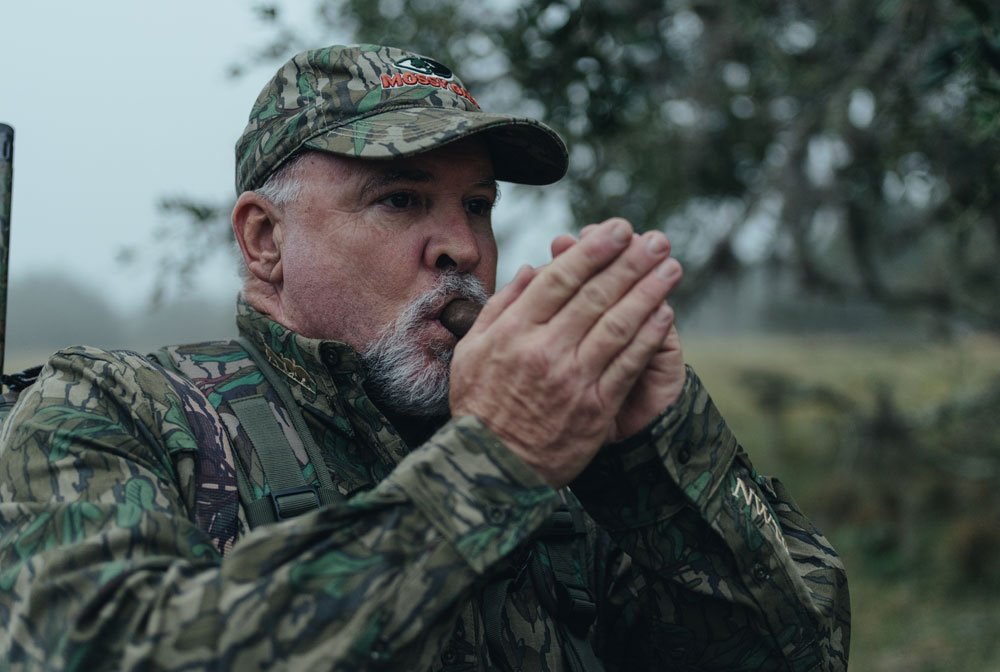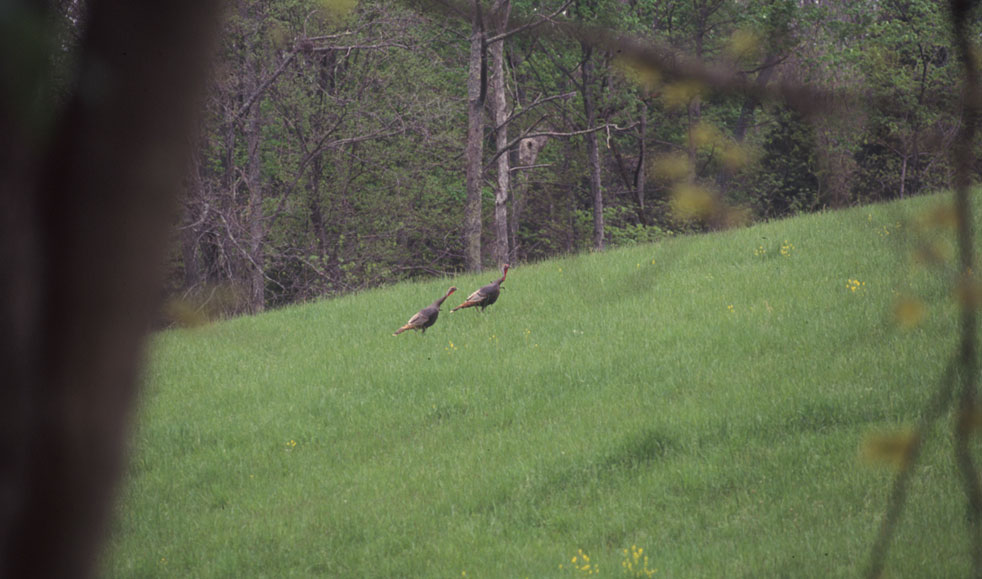Jesse Martin | Mossy Oak ProStaff

Two rivers run through the Daniel Boone National Forest - the Red River and the Licking River. The turkeys love to roost over that water, and there's plenty of hunting pressure there. I've learned that instead of trying to get as close as I can to the roost to bag one of those gobblers, I try to find a strut zone - an open spot away from the river where the turkeys can fly to when they leave the roost - or a place on top of a hill to which a gobbler can fly. Once I pinpoint those kinds of places, I can take a gobbler. So, I don’t even attempt to call the turkeys when they’re on the roost. Instead, I pinpoint the place they’ll fly to when they leave the roost, and I get there before the turkeys do. I’ve found this to be a good tactic to use on almost any public land where the turkeys are roosting over water.
Here’s another tactic I use. If I can hear a turkey gobble from the roost, I’ll try to get as close to him as I can without getting in the water. I’ll give him a soft little tree call to let him know where I am. Then I shut up and don’t say a word. The other hunters won’t get as close to a gobbler on the roost as I will, because they won’t go in to hunt that kind of bird and reach spot they want to call from while it’s still dark. So, when the rest of those hunters start tree calling and yelping to the gobblers on the roost, oftentimes, that gobbler will drop down within gun range of where he’s heard me call from while it’s still dark.
I've guided hunters in the Daniel Boone National Forest, and I live really close to the forest. So, I've got plenty of time to scout and find the turkeys that no one else will locate and places to hunt turkeys where no one else will go. Most public-land hunters will go in and call to the gobbler in the tree, hoping to bag that bird as soon as he flies out of his roost tree. But most of the time, I won’t call to the turkey on the roost. Instead I’ll move to where the turkey is going, and I won’t call to him until after he hits the ground.
Another trick I use a lot when I'm hunting public-land turkeys, especially late in the season, is I call very little. I also change calls for late-season hunting. I don’t use the calls that most turkey hunters use. One of my favorite calls for late season is a wingbone call. You have to remember that there's been so many turkey hunters calling to those gobblers in the early part of the season that the gobblers can just about tell you what call manufacturer has produced the call that each hunter is using to call to them. But when you use a turkey call that the birds haven’t heard before, that turkey often will come to investigate that new hen.
Late in the season, I don’t use decoys either, because so many other hunters do use decoys. I want that gobbler to come looking for me and not stop when he sees a decoy. Another call you can use late in the season to take a gobbler is a push-button call. I don’t believe 90 percent of the turkey hunters that you’ll meet in the woods on public lands will have or even know what a push-button call is. They'll be using friction calls, box calls and diaphragm calls. So, once again, you often can make a turkey gobble by using that little push-button call, because he's never heard that sound before. Lastly, don’t forget the tube call. Most public land hunters don’t use a tube call, especially at the end of the season. But do use these calls sparingly at the end of the season.
Jesse Martin, from Mount Sterling, Kentucky, won the Head-to-Head Division of the 2018 National Wild Turkey Federation (NWTF) Grand National Turkey Calling Championship, competing against 32 other callers. He also won the team calling championship with his partner, Mossy Oak ProStaffer Kerry Elliott. Last year at the Grand National, he won the Senior Open Championship. He's won 10 consecutive Kentucky state championships, more than 40 Open State Championship titles and two World Team Challenge Championships and finished in the top five in the Grand National Open Division 10 times.



























